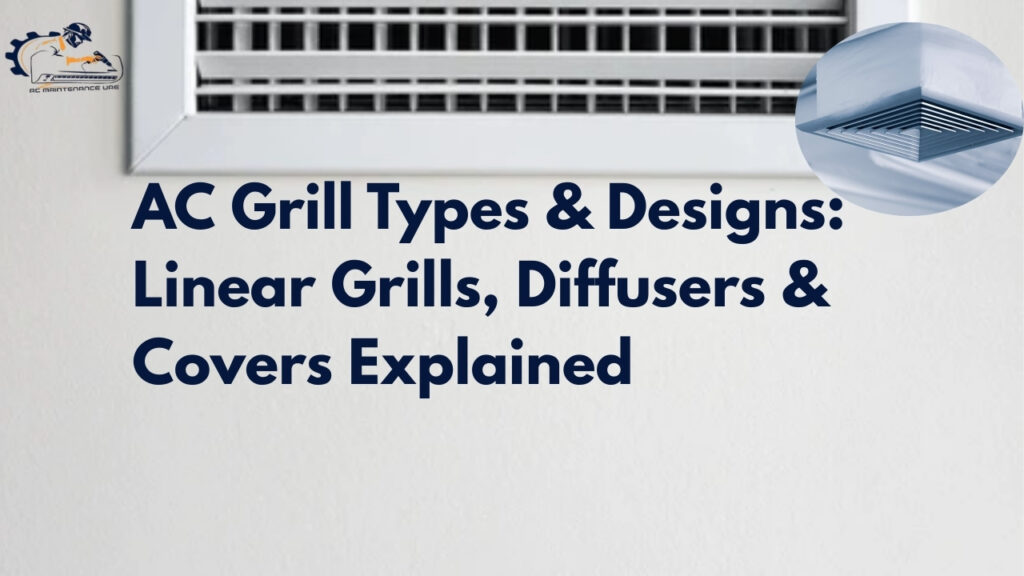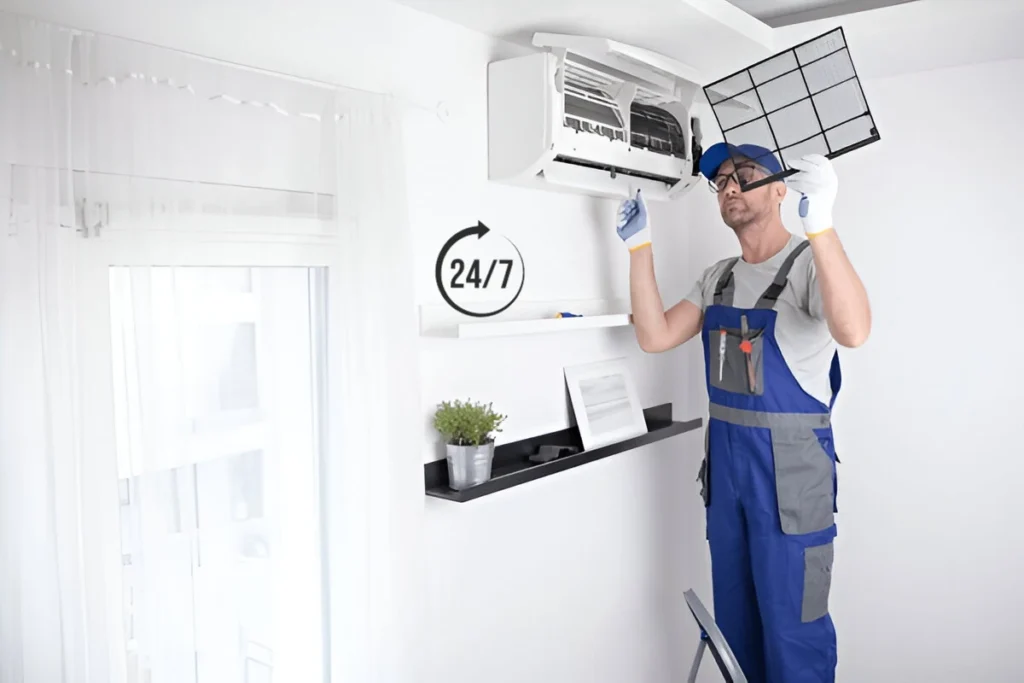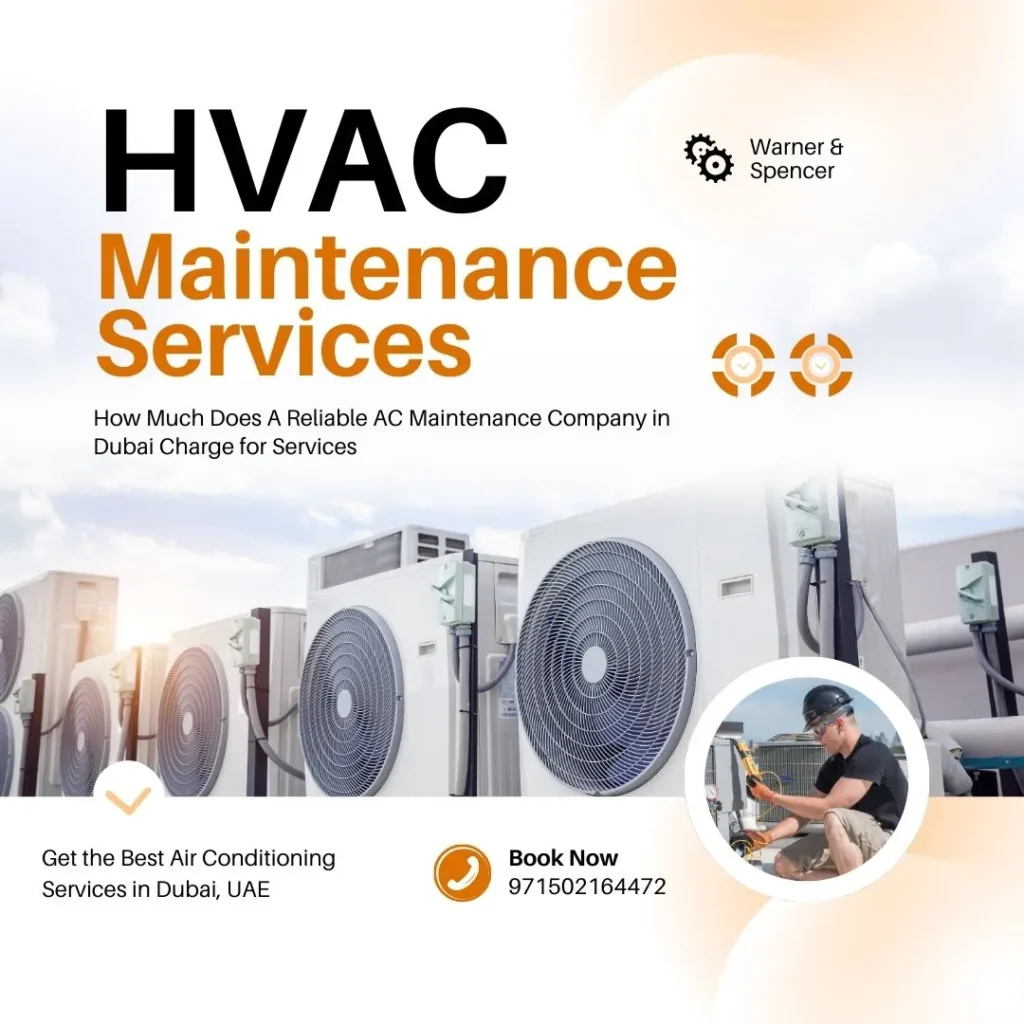Making the wrong choice when selecting the ventilation parts can destroy the performance of your whole HVAC system. Most managers of properties fail to find grilles that can be used that are efficient in air flow and attractive at the same time. This guide will help you make the right choices on the right options of the AC grill that will not only provide air distribution properly but also fit your interior design, be it residential or commercial spaces.
What Is an AC Grill and How It Works
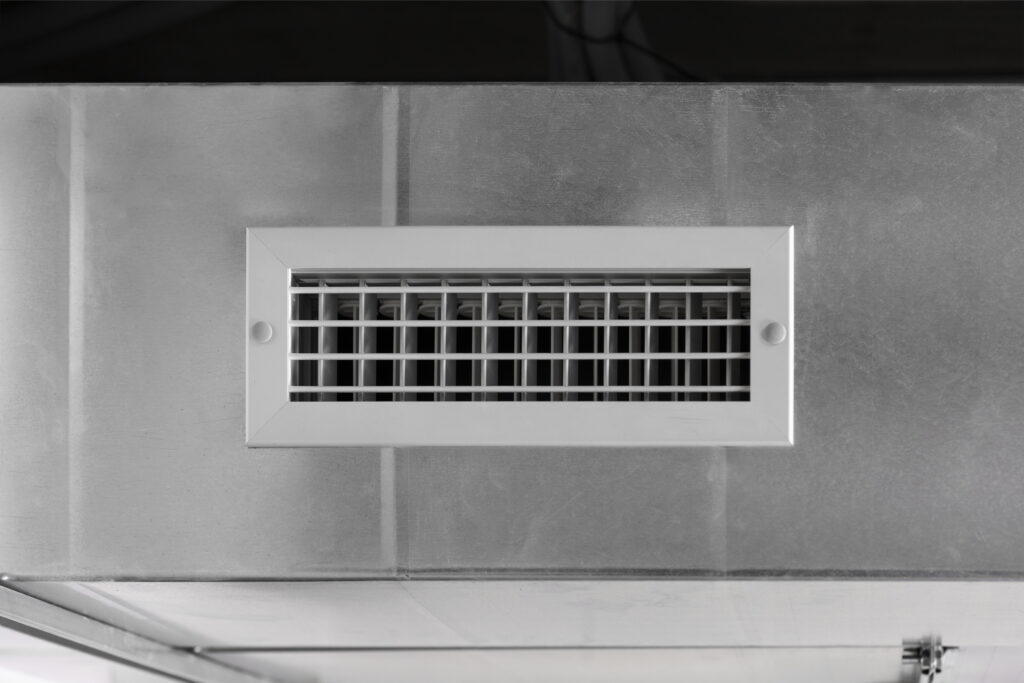
An AC grill is the visible element, which is used to interface your ductwork and living space and the conditioned air is directed, and the debris is filtered while the grill is used to do this. These elements regulate the flow of air and its speed using variable slats or unalterable slats. AC Maintenance UAE lays grilles that ensure appropriate system pressure without allowing foreign objects to enter your ducts.
The simplest action is the intake of return air using intake grilles, or the supply air using outlet grilles. Fixed blade designs have easy air flow whereas adjustable ones allow you to redirect the air flow as per the occupancy dynamics. Correct sizing ensures that you do not have to deal with noise and do not experience poor air exchange rates.
Key Functions of AC Diffuser Grills.
An AC diffuser grill is a type of air that diffuses in various directions to form a homogenous temperature without drafts. Diffusers are also used to distribute air over ceiling planes in specific patterns, unlike normal grilles, which force air in a single direction. This construction eliminates hot or cold spots in high-ceiling or irregularly configured rooms.
The advantages of the core diffuser are:
- Bidirectional airflow, which minimizes stratification of temperatures.
- Noiseless operation by lowering the air speed at pop-out points.
- Improved comfort of mixing supply air with room air.
- Fewer adjustments after installation.
Understanding AC Grill Covers and Their Use.
During construction and renovation work, ductwork openings are covered to shield them with an AC grill cover. These shields are temporary so that dust, debris, and paint do not enter your air system or distribution system. These protective covers are later substituted with permanent grilles once construction has been conducted to ensure that there is appropriate ventilation.
Finished spaces have decorative covers as well. Other property owners have decorative screens to cover ordinary grilles based on particular design themes. These decorations should have sufficient percentages of free areas so that they do not limit the movement of the air, resulting in strains in the systems.
Types of AC Grills Used in HVAC Systems
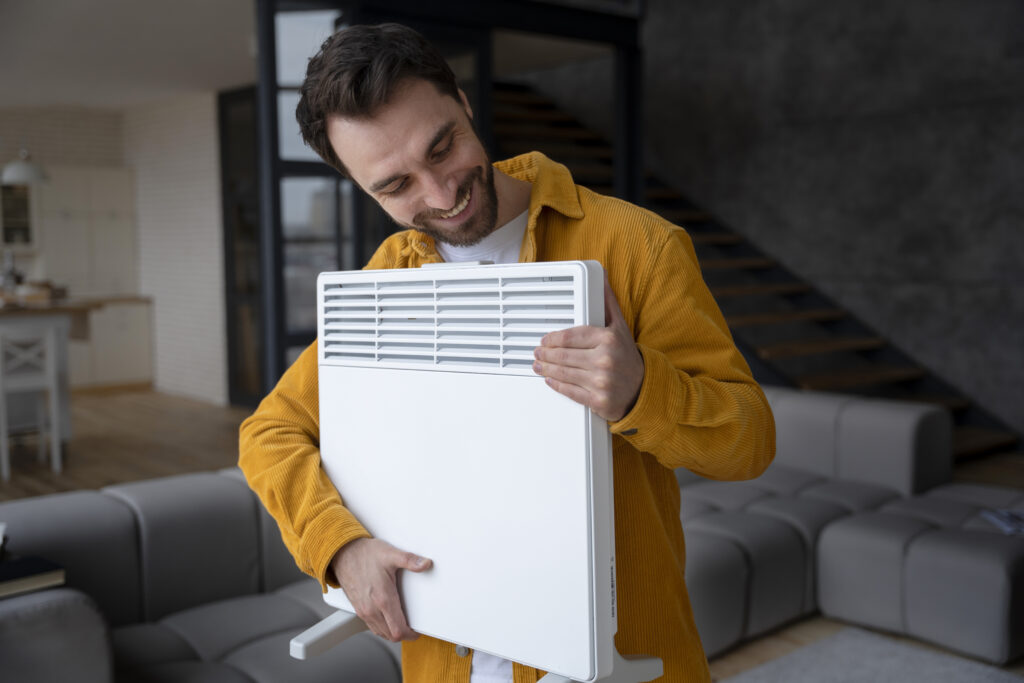
AC grill types are used in different ways in air distribution networks. Supply grilles are used to provide conditioned air into occupied spaces, and return grilles are used to draw air to your air handler in order to be reconditioned. Transfer grilles enable movement of air in between rooms, thus have no dedicated ductwork to balance pressure in the areas.
Exhaust grilles eliminate stale air in the bathrooms, kitchen, and mechanical spaces. All types have certain design peculiarities that influence the patterns of the throws, drop of the pressure, and the level of noise. When you pick the wrong type to use in your application, you end up with comfort complaints and energy loss.
Standard Supply and Return Grill Designs.
Supply grilles have angular louvers that either run horizontally or vertically according to the location of mounting. The sidewall models normally spray air at distances of 15-20 feet in between rooms, whereas ceiling models spray in circular or straight lines. Freer, bigger areas with less restrictive patterns are used in return grilles because they do not require directional control.
Typical supply arrangements:
- Single-deflection grilles have a single set of adjustable blades.
- Two-blade set of grilles that are specifically controlled.
- High-volume low-velocity perforated face grilles.
- Continuous-linear air distribution slot diffusers.
Return grilles have simple stamped designs or bar designs. Such elements give priority to the volume of airflow rather than throw range, and demand 50-70 percent of the free area of similar supply grilles. The AC Maintenance UAE remodeled the grilles under the return to avoid overspeeding of air that would result in whistles.
Linear Grills: When and Why To Use Linear Grills.
Linear AC grill offers continuous slot apertures, which make architectural air distribution lines. The components are best suited in contemporary commercial environments where the ductwork would be visible, spoiling the clean design appearance. A linear grill AC system can be incorporated into ceiling designs, making them virtually invisible, yet it has the appropriate building ventilation.
It has been used in retail stores, corporate offices, and residential buildings of the modern world. The narrow slot construction puts air over large spaces without clutter, with a series of individual grilles on ceiling planes. It must be installed with a strict alignment and special-purpose plenum boxes behind accomplished ceilings to supply the extended slot openings.
Performance characteristics are not like conventional grilles. Linear systems evenly spread air over the length of the system, and a uniform temperature distribution is formed in open floor plans. The distribution pattern avoids dead zones as would be experienced with broadly spaced point diffusers. The long-range shot is 20-30 feet, which varies according to supply air velocity and slot width.
AC Grill Design Options for Different Spaces
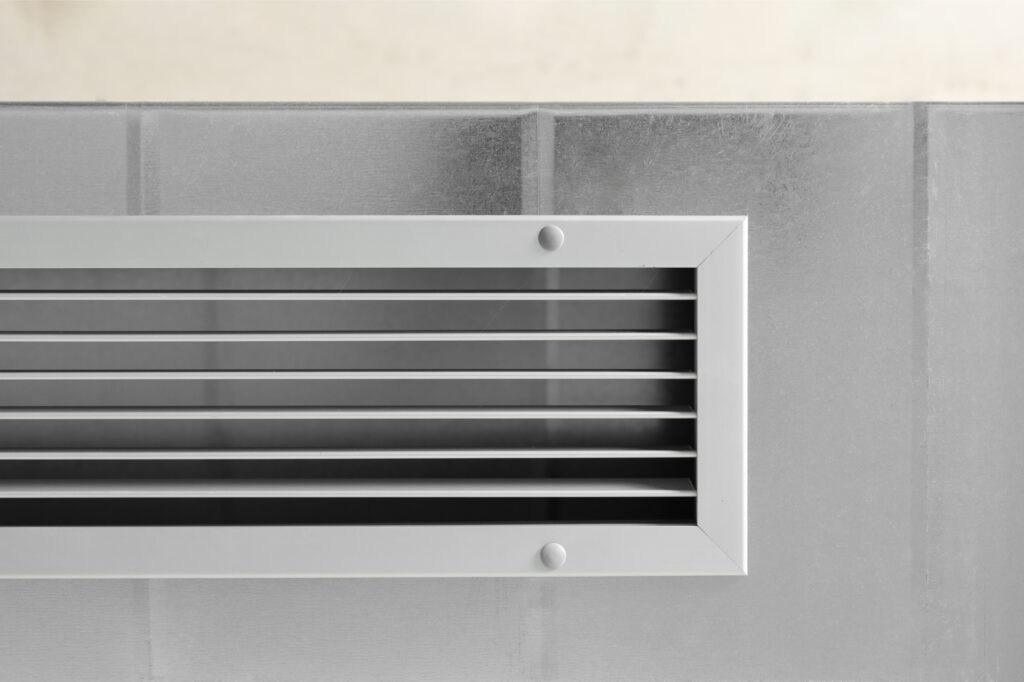
Today’s AC grill design focuses on functionality as well as aesthetics. This is because architectural grilles are incorporated with interior finishes using matching colors and profile choice. Commercial works tend to define their own sizes and patterns of the ceiling grid or a lighting installation to match each other and create seamless looks.
In residential use, smaller grilles with decorative borders are preferred to supplement trim packages. The open-plan areas enjoy the advantage of slot diffusers that become invisible in transitions between ceilings. The construction of industrial settings is more about durability and less about beauty, and the metals are heavy-gauge steel, which is covered with protective paint.
Louver Patterns and Frame Structures.
The spacing between louvers controls the distance of throw and the velocity of air in discharge points. The long throws are formed by tight spacing (1/4 to 3/8). Large separation (1/2 to 3/4 inch) diminishes velocity in short throws where there are occupied areas. The throw patterns are adjustable using adjustable louvers.
Frame types are surface-mount frame, flush-mount frame, and frameless. Surface-mounted grilles are raised above finished surfaces and are therefore easy to install, but leave visible edges. Flush systems entail accurate cutouts that present grilles as a part of adjoining finishes. Frameless linear grill styles do not have visible borders, which have minimal aesthetic influences.
Pattern options:
- 0 degrees fixed horizontal maximum throw.
- 45 degrees angled to create wall washing effects.
- Volume control is used by opposed blade dampers.
- Multi-directional diffusion eggcrate patterns.
Selection of Material: Maintenance and Durability.
Steel structures are the best to use in commercial structures that are subject to high traffic. Aluminum offers resistance to corrosion in coastal areas or in areas with high humidity. Plastic grilles are applicable in residential projects where weight and cost are more of a concern than longevity.
Galvanized steel helps to avoid rusting in unconditioned areas such as attics and parking buildings. Stainless steel is used to deal with corrosive areas such as pools and industries. AC Maintenance UAE will help you select the materials depending on your environmental conditions and life expectancy.
Choosing the Right AC Grill for Your System
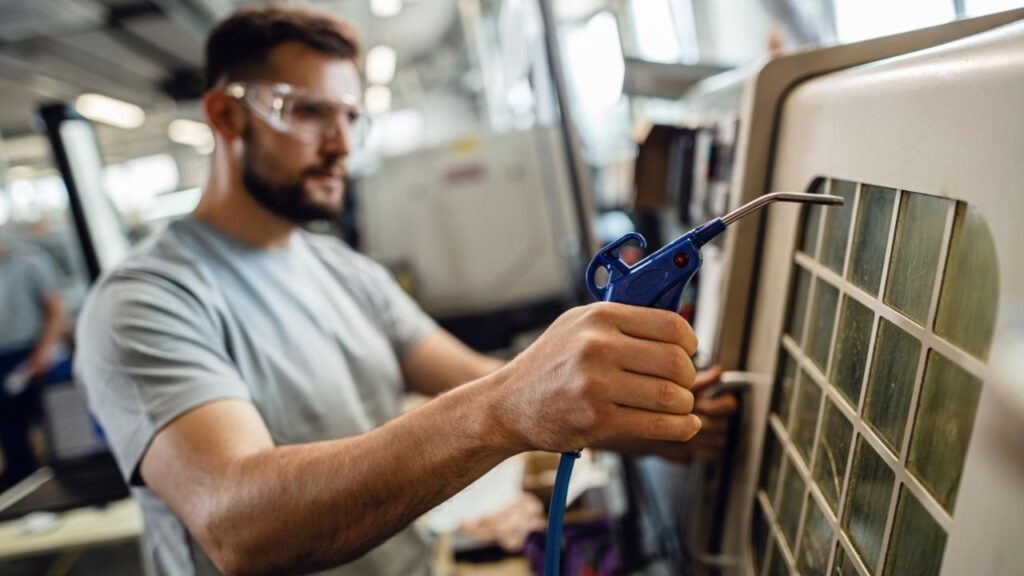
The appropriate choice provides the balance between airflow needs and noise restrictions, and aesthetic needs. Begin with the calculation of the necessary free area/duct size and design air velocity. The majority of applications aim at 300-500 feet per minute (FPM) on the grille face in order to prevent noise generation.
Next to be considered are mounting height and throw requirements. The steeper blade angles, or higher discharge velocities required to reach occupied areas in high ceilings, are in grilles. Diffusion patterns used must avoid drafts on people directly under grilles because of low ceilings.
Matching of Duct Dimensions to Grill Size.
Grilles that are too small cause too much pressure drop, which will compel your air handler to work harder. Such a mismatch lowers the efficiency of the system and lowers the life span of the equipment. Large grilles are good and superior to small ones, but at the same time, they look out of place in smaller areas.
Sizing guidelines:
- Measure real duct opening dimensions.
- Mounting flanges: Add 2″ to length and width.
- Determine the free area required at 400 FPM.
- Confirm that the throw distance is within the target zones.
- NC (noise criteria) ratings of check manufacturers.
Return grilles need 125-150% supply grille free area within the same room. This ratio avoids negative pressure that causes doors to be difficult to close or produce whistling sounds at points of gaps. Transfer grilles between spaces must have the same supply air volume as in the upstream room.
The choice of Finishes: Powder-Coated or Anodized Finishes.
Powder coating offers permanent color finishes, which are not easily chipped or scratched. It is an electrostatic process whereby powder particles are charged and all melted into a smooth coating during the curing process. Standard whites, blacks, and metallics are available, with custom matching being offered to more design-specific projects.
Electrochemical hardening, Anodized aluminum has better corrosion resistance. The procedure develops wear-resistant finishes in silver, bronze, and gold coatings. Anodizing is more expensive than powder coating, but it has a longer lifespan in extreme circumstances. Anodized finishes do not alter the appearance of aluminum and provide some protective coating to it.
Linear vs. Traditional Grills: Essential Differences.
Conventional grilles are focused on directing air through separate holes located in ceilings or walls. Linear grill AC systems are systems that supply air across architectural lines in a continuous manner. This basic distinction influences the patterns of throws, their complexity of installation, and their appearance.
Comparison factors:
- Coverage Linear systems process 2-3 times greater area per unit.
- Installation: Linear will need a plenum to be fabricated.
- Flexibility: Conventional grilles can be easily adjusted after they are installed.
- Cost: Linear systems are 40-60 higher in cost of installation.
- Appearance: Linear makes more architectural appearances.
The conventional systems are preferable in retrofit projects where the ceiling access is minimal. Linear lighting is bright in new building construction, as plenum areas can be well planned prior to the installation of drywall. AC Maintenance UAE assists customers in considering such tradeoffs in the light of project budgets and timeline limits.
FAQs on Installation and Performance
What is the frequency of cleaning of my AC diffuser grill?
Vacuum clean the residential grilles every 2-3 months using a brush attachment. Dust loads are also greater, and monthly cleaning of commercial areas is necessary.
Can I paint my AC grill cover?
Yes, but paint that is meant to be applied on metallic surfaces and does not block louvers. Ideally, it is best to remove the grille prior to the painting.
What is making the air grilles whistle?
Smaller grilles or covered return tracks develop excessive velocities, resulting in noise. Augment free space or obstruction examination.
Is there any difference in the grilles required when it comes to heating or cooling?
Both functions are performed by most grilles, although cooling is well served with horizontal throws, whereas heating is well served with downward-angled louvers.
Do you know whether my types of AC grills are properly sized?
Put a tissue close to the face of the grille. It must flutter softly with no sucking against the louvers or hardly at all.
Would it be possible to use a linear AC grill in an old ceiling?
Potential, but must have a major ceiling adjustment to allow create adequate plenum space. The retrofit programs tend to be effective on conventional grilles.
Common AC Grill Problems Troubleshooting.
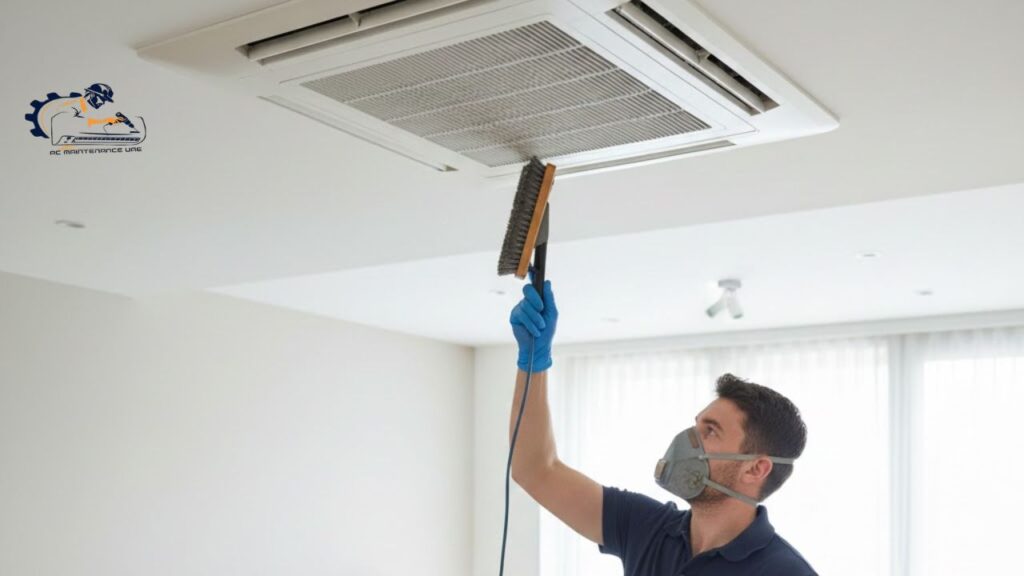
Uneven cooling usually arises due to clogged or misplaced grilles. Ensure that furniture, curtains, or any stored objects do not block the air passageways. Select the position of the louver to blow air into occupied spaces, not to walls and windows.
The over noise implies velocity issues. The partial closing of supply dampers lowers the rates of flow, but can lead to other comfort problems. To get improved solutions, bigger grilles should be installed, or many smaller grilles should be installed to allow the necessary air mass to be delivered without superior velocities.
Hacking on grille faces occurs in cases of inadequate supply air temperatures or excessively high humidity. Enclose supply ducts in unconditioned spaces and ensure that your air provided to the cooling load is not larger than the requirements of the cooling load. This issue is mostly experienced during shoulder seasons when the humidity outdoors is elevated, but the cooling requirement is moderate.
Professional Grill Selection and Installation
After knowing the types of ac grill arrangements to use in different applications, you can make wise decisions to ensure performance and design objectives are achieved. AC Maintenance UAE offers high-quality evaluation services corresponding to your requirements for certain products, proper distribution of air flows, and efficiency of the systems. Our installation crews also do simple replacements as well as complicated linear systems that require custom plenum fabrication.
Are you willing to replace your ventilation elements with sizable and correctly positioned grilles? Get in touch with our technical team to have an elaborate analysis of the existing system and suggestions for improvements that will provide you with enhanced comfort at a reduced operating cost.
AC Maintenance UAE Team
Welcome to AC Maintenance UAE, your reliable partner for complete air conditioning repair and maintenance services in Dubai, Sharjah, and Abu Dhabi. We are strongly dedicated to excellence and deliver efficient and reliable services to keep your cooling systems performing at their best.

